In the third of the series - Jim Clohessy looks at winter lure fishing - A great way to catch some fish if the weather allows

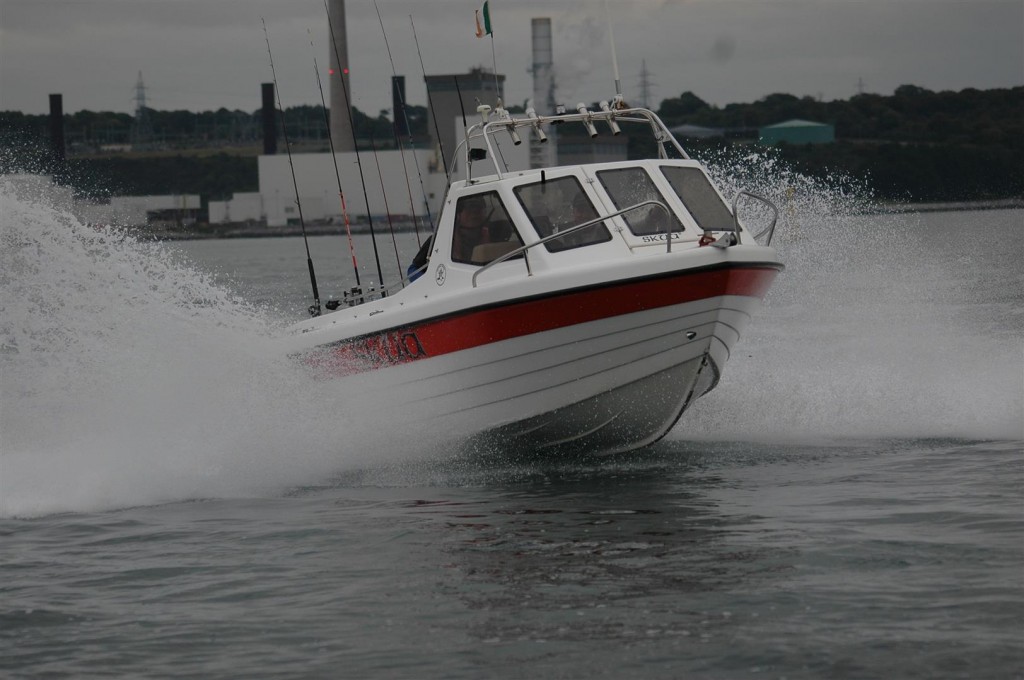
Winter Boat #3 – Lure
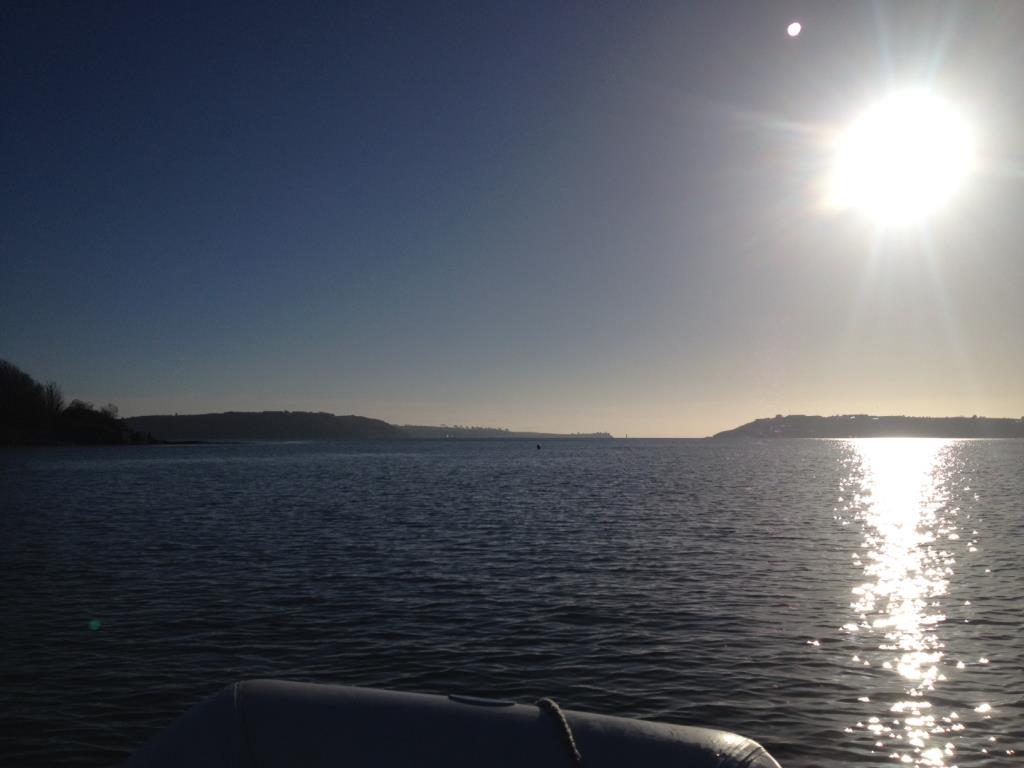
A crisp winter day in Cork Harbour
In the third part of the Winter Boat series we move on to winter lure fishing…
I could be accused of rushing through the first two parts in order to get here! I am a rather devoted lure angler and while bass are probably the holy grail of lure fishing it must be said that pollack and cod make up the bulk of lure catches and sessions and much of the sport.
One thing is for sure bass will not be around in the depths of winter. We know for a fact. Bass leave the harbours and shoreline between October and December and will not return again until March at the earliest and more than likely into May. Of course there will be some bass that don’t move out but these are not really a viable target for the lure angler. You will spend too many cold days for little or no return. Water clarity is always an issue and never more so than during the winter. There is little point is chucking lures into soupy water; of course you may catch, it will owe more to luck than any particular skill on the anglers behalf.
Don’t let people cod you! Lure fishing of this kind is actually new to this side of the pond. Of course there are guys springing out of the woodwork with claims of “been at it for years, me”. Truth is, back in 2008/9 you couldn’t get a decent lure rod in Ireland nor the UK. It wasn’t much better in 2010. So you can see that “modern” soft lure fishing is a fresh approach to lure angling. It really is more than a fresh approach; it is a revolution in how we catch fish in the winter time.

The reward – A nice codling
If you told me back then that I would be fishing for cod in winter time without bait, I would have reckoned that you were mad. Winter fishing was always a two-day event, first get the bait and the next get out there and use it. For the last few years I have not fished with bait during the winter. I have not needed to. I have be able to get my fishing fix using lure only. It has opened up so many opportunities
I have been experimenting with these techniques for a few years now and there is a recipe for lure success and it just so happens that cutting your teeth on cod and pollack will not only get you some decent fish but they will stand to you later on when you want to target bass.
One thing is for sure: the proper rod makes all the difference. I like 7’ rods. They suit the confines of a small boat. You rod will be used for casting as well as vertical fishing so make sure it is comfortable to use and nicely balanced. You will need to strike a balance between the weights you will use and the rods action. To put it simply – little point having a 150g rated rod and using 20g lures most of the time. You will achieve little by way of satisfaction by being over gunned. Fishing from a boat will see you fishing vertically and also casting. Really you need rods that will accomplish both. Most rods will do both fine.
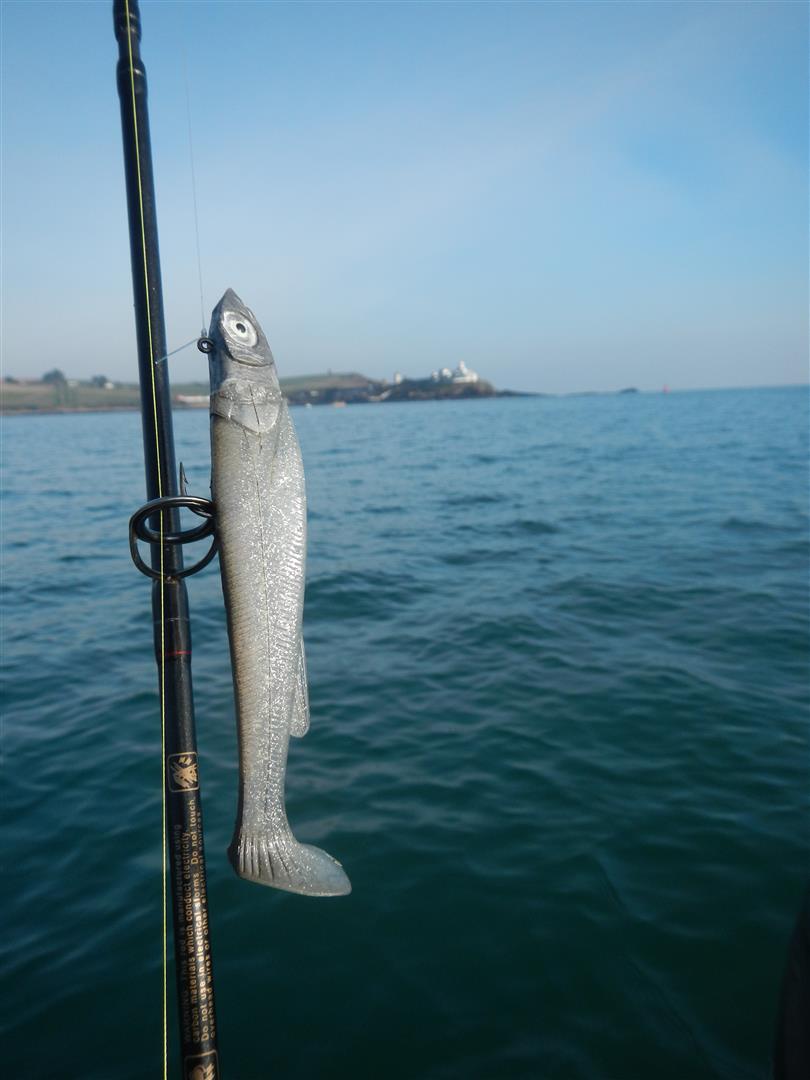
The Sakura L16 Shad – A great cod catcher
The trick is to gauge what lures you will use most often and get a rod that will straddle most occasions. Of course you can also buy a fleet of rods for all occasions. If you like this style of fishing you will probably need at least two rods. Without labouring the point here are some rods that have stood the test: Illex S210MH, Pezon Et Michel Oceaner or Kairo, P&M Gunki Hayashi, Sakura Shinjin Neo , Abu Garcia Rocksweeper, Surecatch Salty, Tenry Bulldog & Injection. There is a massive range of range of good rods out there. There are also plenty of rods that promise much and deliver little.
The weight lure you will have to use will hinge on a number of factors. Your line will have a big bearing. The thicker the line the more effect the tide and drift will have on your ability to hold bottom. This is why lure anglers like modern 8-strand braid for their lure fishing reels. If you go by the diameter quoted on the box, something like 0.13mm for 20lb line is perfect. The older thicker braid will do fine for your “normal” boat angling. Braid of 0.13mm will do a few jobs for you. It will give you the smallest diameter possible but it will also allow you to pull through some snags. This lure fishing game can be hungry on lures. I do like to use a leader (I don’t wind it through my eyes) of 20lb fluorocarbon. Something like Ultima Proteus is perfect. Thinner diameter line will also help your casting. Think of the wind effect and weight of heavier line whizzing through the air. It just doesn’t add up to a good balance having heavy braid. I have seen anglers use 60lb braid on spinning reels used for local fishing for cod and pollack. “It’s as thin as 15lb mono” – you are really ignoring the advantages of using braid in the first place!
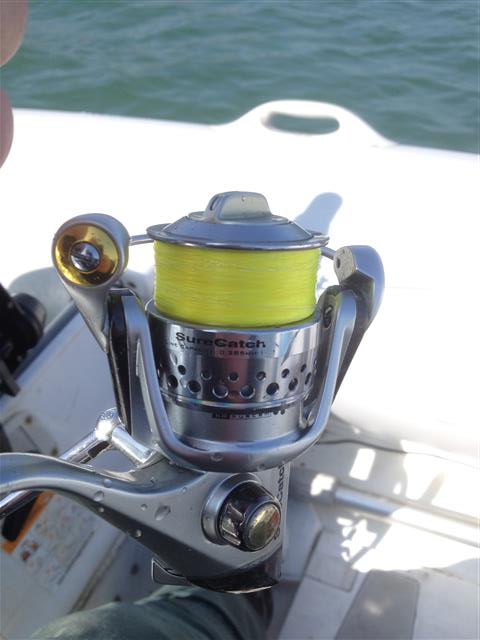
Reels in the mid-price range suit me
Your reel will be a matter of personal choice. You could use a baitcaster if you wish. I prefer to use a fixed spool reel. I like the simplicity and I am happy that I can achieve better accuracy with a fixed spool. You will have to strike a balance between cost and service with reels, not that expensive reels always last longer. I have used reels that do not like braid. I have used some braid that didn’t like the reel I was using – Wind knot city! Most modern reels have good line lay and “like” braid. I would stay away from the bargain basement priced reels and go for something at least in the mid-price range of (€100).
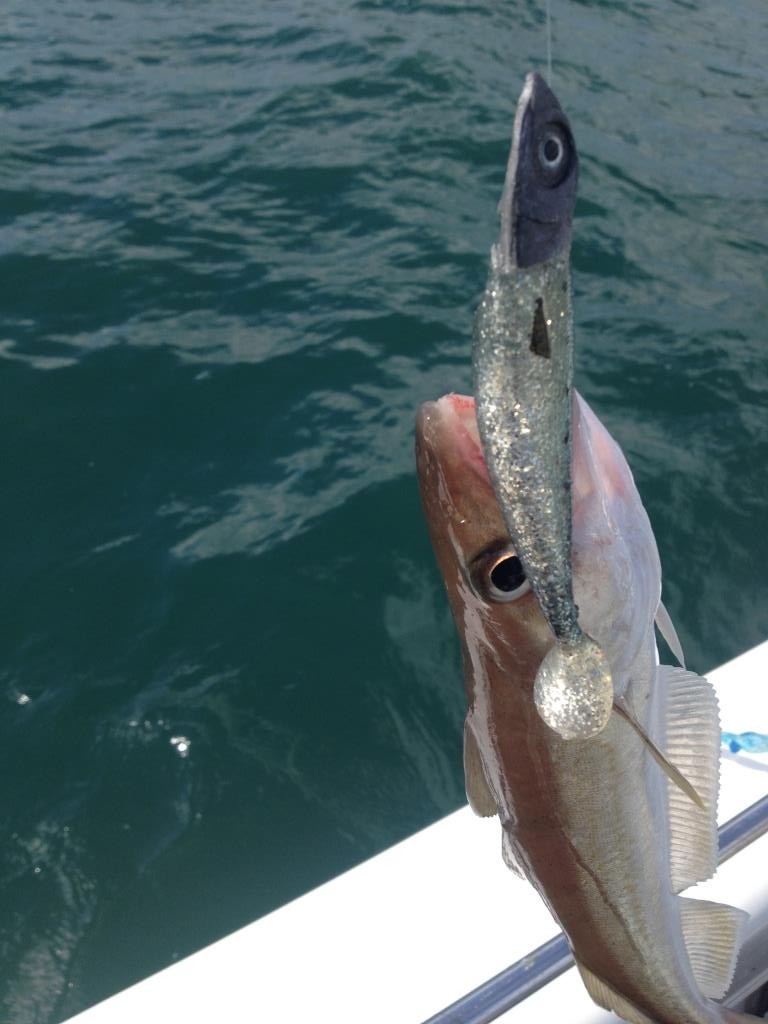
Illex Nitro shad mated with a Bricoleurre V2 Jig Head
You will need to choose a reel that suits the rod you are using. I like smaller reels. I like the lightness of the combination especially when you consider a long day of fishing. I will not suggest a particular size reel as you will notice that not all manufacturers sizes are equal. One manufacturers 2500 or 3000 is another manufacturers 1000. I usually find that 4000 series reels are a little too big for my usual lure fishing. I reserve the bigger reels for heavier and deeper work on the offshore wrecks.


Weight and tide
When you are fishing lures vertically you need to consider where the “action area” is going to be. Pollack more often than not will be found up in the water column rather than hugging the bottom. Cod by their nature will be found rooting around the bottom. Pollack will chase a lure down to the bottom and cod will follow a lure upwards but in general they will be where they spend most time. We must get ur lures into the action areas and if we do not get a fish immediately we need to keep our lure at the prime catching point.
A weight less than 25g will only be used in the slackest of tides or when you are either anchored or casting. 30g is a very popular weight for moderate tides. 45g is a great all-rounder and will be used in most conditions. 50-60g is perfect for rooting out cod when in greater depth or when the drift forces us to up our weight. Any bigger than that tends to be used in extreme circumstances or when you move offshore. The big issue with weight is that you are limited by the capabilities of your rod. There is only so much abuse you can hand out to a light rod! Once the rod’s action is compromised you need to change rod, lure or location.
In winter time I use 30-50g heads more often than anything else. Conditions are likely to be fairly calm when I go fishing so in Cork harbour I will have to contend more with drift created by the tide than wind. I tend not to fish in Cork harbour during the strongest tides as the drift becomes unmanageable. You get a window of maybe two hours but that is about all. It just becomes too difficult to keep contact with the bottom. Keeping in contact with the bottom is the secret to successful cod fishing. Forget the “touch the bottom and go” techniques of pollack fishing, cod is all about getting to the bottom and staying there. If you are getting the impression that there is really no one solution you would be right. If you are getting the impression that you are dealing with being ready for the conditions presented on the day, you would be right. Think about getting the right balance between rod, lure and drift. Get it right and you will catch cod… If there are cod about to be caught.
I will select my choice of lure once I decide where I am fishing, the drift I have chosen. If the drift is fast I will go with a heavier weight but usually I will start with 40g. It’s where I’d like to be fishing. Once I position the boat and start the drift I will drop to the bottom and do my damnedest to keep in contact. I will lift the rod tip a few cm’s and I will drop back down. On the drop I will want to feel my head touch the bottom again, ideally without having to leave out any more line. If I can do that I have the best weight for the conditions. If I have to be continually leaving out line I will have to increase my jig head weight. If I can keep connected to the bottom very easily a lighter weight might do the trick. You get the drift? I find I catch more fish when the balance is just right.
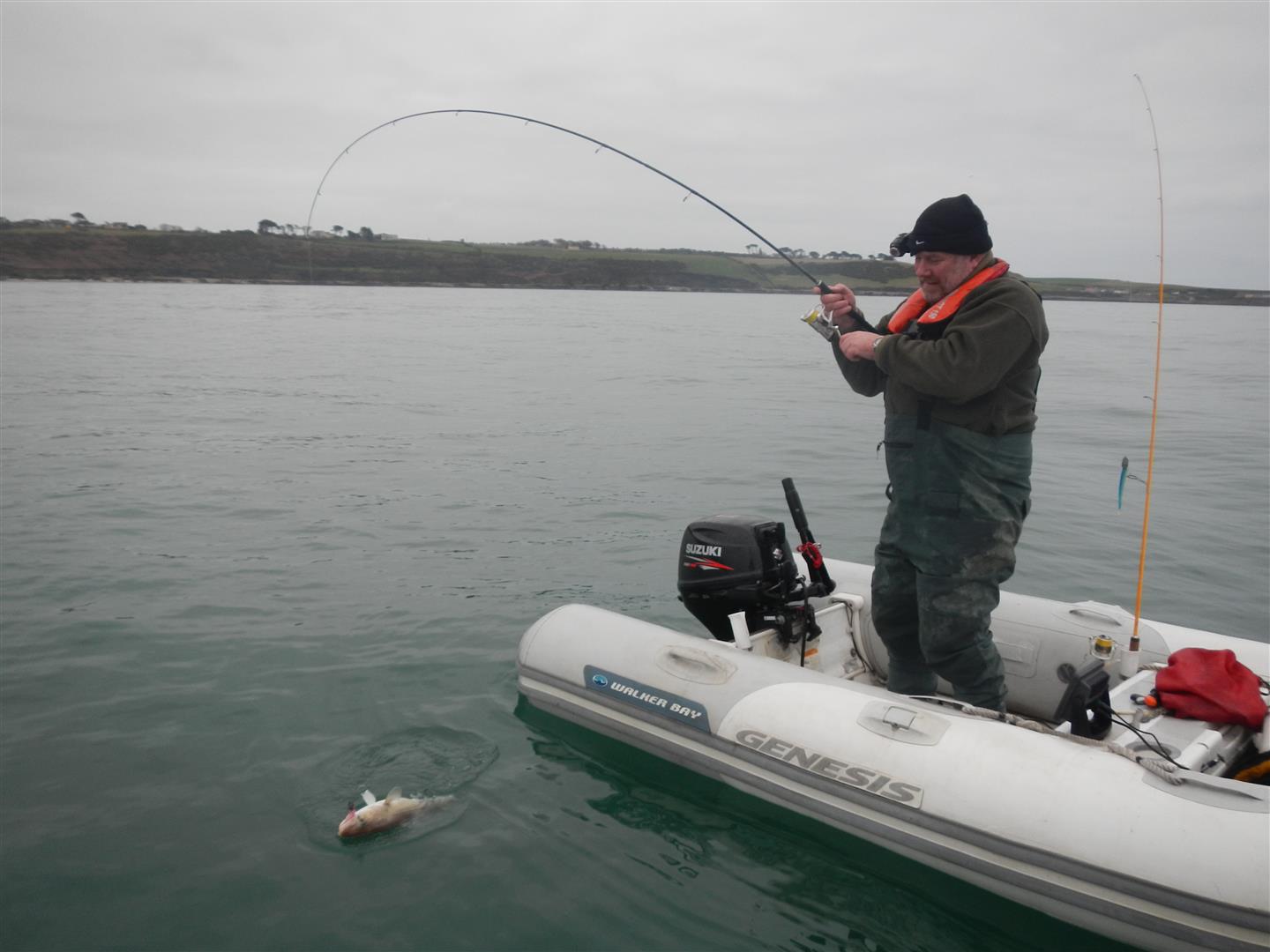
Getting out in the Rubber Duck
Too light a weight and you will be constantly leaving out line and losing contact with the bottom and losing contact with the lure. Too heavy a weight and you will find the lure is harder to work and your likelihood of getting stuck in the bottom increases. Get that balance right and you stand the chance of getting in the zone! It is a moveable feast really. As the drift increases or decreases you will find you will change your lure accordingly. As the tide increases and decreases so will the drift.
Colour
Colour is down to personal preference. Much of the time colour is related to your confidence based on past experience or from something you have seen or read. I like orange lures for cod. I like pink lures for cod. I have caught cod on just about any colour available but when the going gets tough I like to send down a pink or orange.
Certainly in places like Cork Harbour, where you get a colour in the water most days, the oranges, pinks and whites show up well and the cod seem to go well on them. In clear water these colours will still work but so will the more natural colours. If you are thinking that any colour has a chance of catching cod on any given day you would be correct. If you are thinking that cod fishing is an experimentation game you would be right. If you have the right gear, if you can master the techniques, if the fish are about your chances of success are great.

Cork Angling Guide Richie Ryan takes clients right through the winter – Search – Corkbass
You can see we are not getting hung up on types and makes of lures. Of course you will have your favourites, of course some lures are better than others but there is one thing to be certain of: Cod are not a fussy fish! They will take any lure offered, especially so if there is competition for food. If there are a few cod hunting around for grub they will compete with each other to snaffle your lure. If there is one cod lounging around it will be more fussy. One thing is for sure, I will not use any of the raft of modern expensive lures when fishing for cod, or pollack for that matter. I don’t see the point of destroying expensive lures for fish that are not that fussy in the first place.
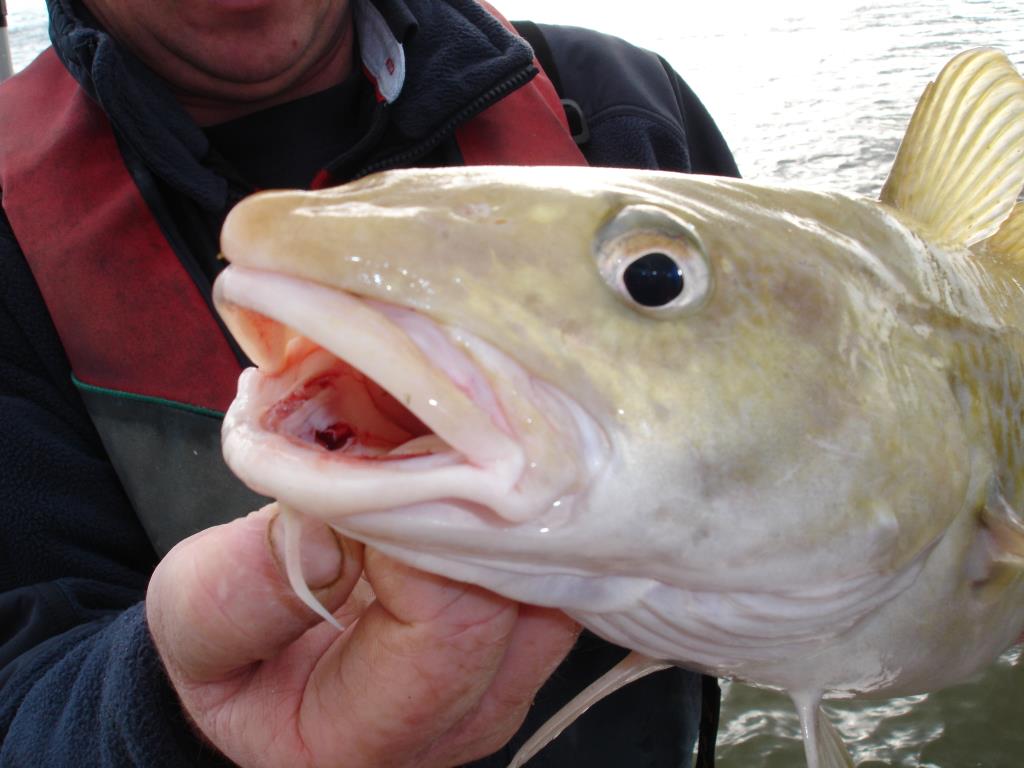
That gob will make short work of big lures!
One thing you should do is to keep different styles of body. Have some paddle tail lures and some pin tail lures in your box and already rigged to bodies. Both lures will catch fish. I reckon that pin tails, apart from being great all round fish catchers, have a useful purpose too – all down to the fact that they have less drag in the water than paddle tails. If you are fishing borderline conditions and your paddle tail is struggling to hold bottom, the reduced drag of a pin tail might do the job perfectly. I have often been able to keep on fishing as the tide builds due to the use of a nice pintail – the Sakura Majikeel or the Koneel springs to mind. The Berkley Power Bait Minnow is a cracker. The Illex Nitro Jerk is another favourite. Simple “senko” stick style lures will also catch cod. There is a huge choice and winter time often sees great deals on soft lures appearing in shops and online.
Preparation for Perfection
It is important to have a decent stock of jig heads that are ready to fish as soon as you arrive to your cod ground. No point in wasting time dressing up jig heads unless you really have to. Spend time dressing jigheads in your shed and stock up your lure box. The biggest problem you should have when you arrive to the mark should be what colour? What weight?
I do carry spare heads and spare bodies in my tackle box. These are carried along with pliers, glue, weighing scales, a spool or two of leader material and of course a couple of braid scissors.
All this is stored in a built for purpose lure box. I use a Flambeau T5P Multiloader Pro. A superb storage solution for the lure angler that is serious about lure fishing and that moves from boat to boat for lure sessions.
I carry hard lures in a separate bag. I would rarely use hard lures even less so in winter. I always carry a range of metal jigs in my box too. Essentially I will carry what tools and gear I need to ensure that I am going to spend more time fishing and less time faffing about looking for gear! At the same time I will have two rods tackled up and ready to fish. If I get snagged up and have to break out one I will fish with the other until I get a chance to carry out running repairs.
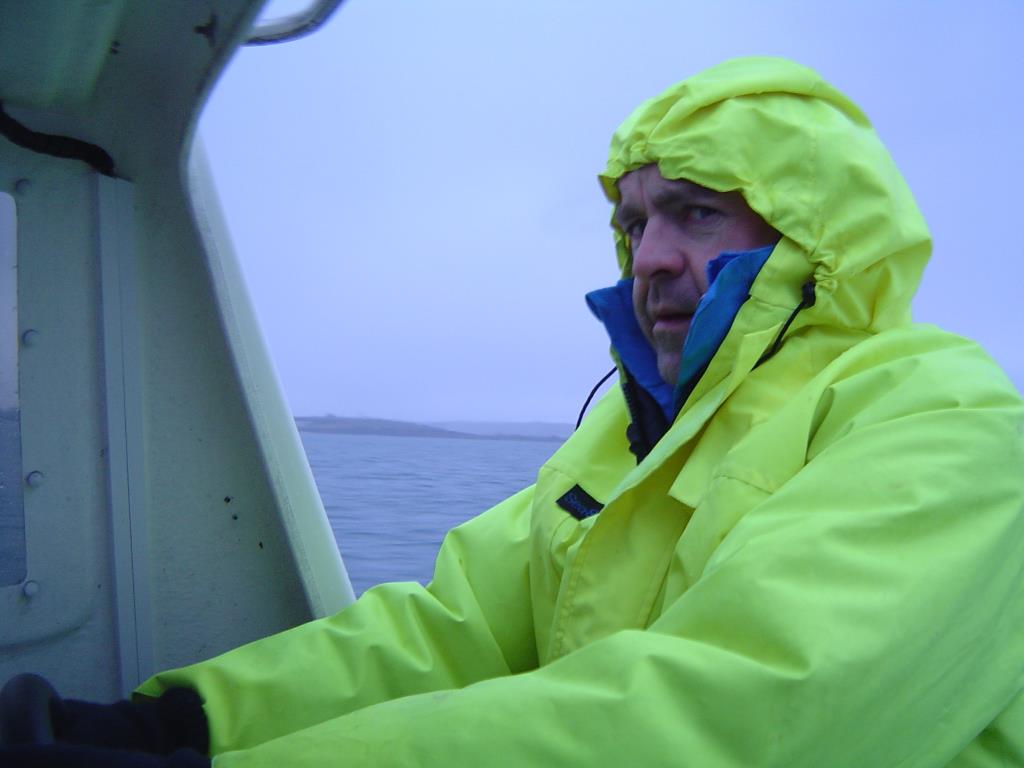
Nobody said it was a beauty contest!
It’s All About Getting Out there
Whatever your preferred choice of fishing this winter, bait, lures or both it is important just to get out there and give it a go.
When you do go, make sure you give yourself every chance of catching fish and returning home in once piece. Take a look back at some of the older articles here on TopFisher and you will see how safety and maintenance along with planning and proper execution will yield results in the most trying of conditions. But if course most of all – Enjoy!
If you are wondering what it’s like in action? Have a look here:


